Papers by Gunnar P H Dietz
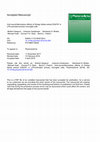
Phytomedicine, May 1, 2018
Background: Neuroinflammation is a key factor of Alzheimer's disease (AD) and other neurodegenera... more Background: Neuroinflammation is a key factor of Alzheimer's disease (AD) and other neurodegenerative conditions. Microglia are the resident mononuclear immune cells of the central nervous system (CNS). They play an essential role in the maintenance of homeostasis and responses to neuroinflammation. Ginkgo biloba extract EGb 761 is one of the most commonly used natural medicines owing to its established efficacy and remarkable biological activities especially in respect to CNS diseases. However, only few studies have addressed the effects and mechanisms of Ginkgo biloba extract in microglia activation. We measured the production of pro-inflammatory mediators and cytokines by ELISA and analyzed gene expressions by qRT-PCR and Western Blot in LPS treated cultured primary rat microglia. The Ginkgo biloba extract EGb 761 significantly inhibited the release of prostaglandin E 2 (PGE 2 ) and differentially regulated the levels of pro-inflammatory cytokines. The inhibition of LPS-induced PGE 2 release in primary microglia was partially dependent on reduced protein synthesis of mPGES-1 and the reduction in the activation of cytosolic phospholipase A2 (cPLA2) without altering COX-2 enzymatic activity, inhibitor of kappa B alpha (IkappaBalpha) degradation, and the activation of multiple mitogen activated protein kinases (MAPKs). Altogether, we showed that EGb 761 reduces neuro-inflammatory activation in primary microglial cells by targeting PGE2 release and cytokines. Conclusion: Ginkgo biloba extract EGb 761 displayed anti-neuroinflammatory activity in LPS-activated primary microglia cells. EGb 761 was able to reduce neuroinflammatory activation by targeting the COX/PGE 2 pathway. This effect might
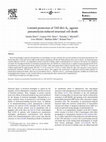
Neuroscience Letters, Aug 1, 2005
Severe brain damage in patients with pneumococcal meninigits is in part caused by the cytosolic p... more Severe brain damage in patients with pneumococcal meninigits is in part caused by the cytosolic pneumococcal protein pneumolysin. The devastating effect of this neurotoxin might be alleviated by interfering with the cell death pathways that it sets in motion. An important player in these pathways is Bcl-X L , an antiapoptotic protein of the Bcl-2 family, which is neuroprotective in various in vitro and in vivo models of cell death. We investigated whether its membrane-permeable form, the TAT-Bcl-X L fusion protein, is capable of protecting human SH-SY5Y neuroblastoma cells against pneumolysin-induced cell death. Under mild pneumolysin-induced neuronal injury, TAT-Bcl-X L increased cell viability significantly by approximately 40% (82.7 ± 16.1% versus 70.0 ± 8.2%; p = 0.04). When the cells were exposed to a more rigorous pneumolysin treatment, TAT-Bcl-X L had no protective effects. This suggests the involvement of additional neuronal death pathways in pneumolysin-induced cell death, which are not controlled by Bcl-X L . Therefore, Bcl-X L , a promising therapeutic candidate for ischemia and neurodegenerative diseases, is only of partial efficacy in preventing the direct neurotoxicity of pneumolysin.
Molecular and Cellular Neuroscience, Jul 1, 2022

Experimental Neurology, Sep 1, 2011
Over the last decade, numerous studies have suggested that neuroglobin is able to protect against... more Over the last decade, numerous studies have suggested that neuroglobin is able to protect against the effects of ischemia. However, such results have mostly been based on models using transgenic overexpression or viral delivery. As a therapy, new technology would need to be applied to enable delivery of high concentrations of neuroglobin shortly after the patient suffers the stroke. An approach to deliver proteins in ischemia in vivo in a timely manner is the use of cell-penetrating peptides (CPP). CPP have been used in animal models for brain diseases for about a decade as well. In a recent issue of Experimental Neurology, Cai and colleagues test the effect of CPP-coupled neuroglobin in an in vivo stroke model. They find that the fusion protein protects the brain against the effect of ischemia when applied before stroke onset. Here, a concise review of neuroglobin research and the application of CPP peptides in hypoxia and ischemia is provided.

Brain Research Bulletin, Dec 1, 2005
Over the last 15 years, many publications described the use of peptide sequences that have been d... more Over the last 15 years, many publications described the use of peptide sequences that have been dubbed cell penetrating peptides (CPP), Trojan Horse peptides, protein transduction domains, or membrane-translocating sequences. These mostly positively charged domains bring attached cargo across biological membranes. One of the reasons for the interest in CPP is their potential as delivery tools to enhance the pharmacodynamics of drugs otherwise poorly bioavailable. In particular, the neuroscientist aiming to deliver a protein or other compound into the brain for analytical or therapeutic reasons is faced with the challenge that few drugs cross the blood-brain barrier. CPP are valuable tools to overcome the plasma membrane or the blood-brain barrier in basic research, and in relevant models of neural disease, and will hopefully help to increase the precious few treatments or even cures for people with diseases of the brain and nervous system. Here, we review applications in neuroscience and recent insights into the mechanism of CPP-mediated trafficking.
American Journal of Case Reports, Sep 12, 2022

Brain and Cognition, Nov 1, 2021
Aged rodents have been used as preclinical models of age-associated cognitive decline. Most of th... more Aged rodents have been used as preclinical models of age-associated cognitive decline. Most of those models displayed substantial impairments in learning and memory. The initial, more subtle changes that precede more severe losses in cognitive abilities have not been well characterized. Here, we established a model detecting initial subtle cognitive changes by comparing the performance of moderately aged Oncins France Strain A Sprague Dawley rats with young rats in the Morris water maze (MWM) and the Open Field (OF) test. Both age groups improved their performance during the training period at a similar rate; however, the older rats performed worse in several parameters measured in the MWM. Our results suggest that already at the age of 18-20 months rats show changes in their approach to solve the spatial memory task while their ability to learn is not yet diminished. The disparate spatial information processing of the moderately aged rats provides a novel animal model for early age-related cognitive alterations that could be useful to test the effect of early intervention strategies. Moreover, our results suggest that the sensitivity of cognitive tests in the elderly could be substantially enhanced if they assess both the improvement after several trials, and the strategy used to solve a certain task.

Frontiers in Pharmacology
It is an often-neglected fact that extracts derived from the very same plant can differ significa... more It is an often-neglected fact that extracts derived from the very same plant can differ significantly in their phytochemical composition, and thus also in their pharmacokinetic and pharmacodynamic properties which are the basis for their clinical efficacy and safety. The Ginkgo biloba L. [Ginkgoaceae] special extract EGb 761® is one of the best-studied plant extracts in the world. In the present review, using that extract as a paradigm, we describe insights how climate, the harvest region, processing of the plant material, the drying process, the extraction solvents, and the details of the subsequent process steps substantially impact the quality and uniformity of the final extract. We highlight the importance of regulating active constituent levels and consistent reduction of undesired substances in herbal extracts. This is accomplished by a controlled production process and corresponding analytical specifications. In conclusion, since extracts derived from the same plant can have ...
Supplemental material, DS_DISC864086 for Novel Cell-Based Assay for Identification of LRRK2 Inhib... more Supplemental material, DS_DISC864086 for Novel Cell-Based Assay for Identification of LRRK2 Inhibitors Using Its Aberrant Regulation of a Pluripotency Gene by David Ramonet and Gunnar P. H. Dietz in SLAS Discovery
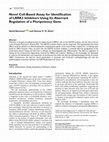
SLAS Discovery, 2020
Mutations in the gene encoding leucine-rich repeat kinase 2 ( LRRK2), such as the G2019S mutation... more Mutations in the gene encoding leucine-rich repeat kinase 2 ( LRRK2), such as the G2019S mutation, are the most common cause of familial Parkinson’s disease (PD). The G2019S mutation impairs neurite outgrowth. We hypothesized that those effects could be related to an altered expression of pluripotency genes, which may provide a readout for a screening assay based on LRRK2 function. Here, we show that the G2019S mutation mediates a sustained aberrant upregulation of the transcription factors Nanog and Oct4 that in wild-type are downregulated after differentiation. The aberrant regulation of Nanog can be concentration dependently reversed by LRRK2 tool inhibitors. Building on this knowledge, we developed an assay for the identification and assessment of compounds that inhibit the aberrant pathophysiological activity of mutant LRRK2. Furthermore, the aberrant neural pluripotency is consistent with Parkinson’s pathophysiology and with the epidemiological association between the G2019S g...
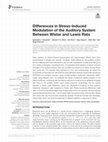
Frontiers in Neuroscience, 2018
Many aspects of stress-induced physiological and psychological effects have been characterized in... more Many aspects of stress-induced physiological and psychological effects have been characterized in people and animals. However, stress effects on the auditory system are less explored and their mechanisms are not well-understood, in spite of its relevance for a variety of diseases, including tinnitus. To expedite further research of stress-induced changes in the auditory system, here we compare the reactions to stress among Wistar and Lewis rats. The animals were stressed for 24 h, and subsequently we tested the functionality of the outer hair cells (OHCs) using distortion product otoacoustic emissions (DPOAEs) and auditory neurons using evoked auditory brainstem responses (ABR). Lastly, using Western blot, we analyzed the levels of plasticity-related proteins in the inferior colliculus, confirming that the inferior colliculus is involved in the adaptive changes that occur in the auditory system upon stress exposure. Surprisingly, the two strains reacted to stress quite differently: Lewis rats displayed a lowering of their auditory threshold, whereas it was increased in Wistar rats. These functional differences were seen in OHCs of the apical region (low frequencies) and in the auditory neurons (across several frequencies) from day 1 until 2 weeks after the experimental stress ended. Wistar and Lewis rats may thus provide models for auditory threshold increase and decrease, respectively, which can both be observed in different patients in response to stress.

Cellular and molecular neurobiology, Jan 24, 2017
Sortilin was first identified based on its activity as part of intracellular protein sorting mach... more Sortilin was first identified based on its activity as part of intracellular protein sorting machinery. Recently, it was discovered that sortilin also acts as a cell surface receptor for the propeptide form of nerve growth factor (proNGF), progranulin, and neurotensin. The interaction of sortilin to these neurotrophic ligands is linked to diseases of the nervous system that lead to neurodegeneration and neuropathic pain. Blocking of the interaction of sortilin to these ligands may prevent or slow the progress of these nervous system disorders. In vitro screening assays for blocking compounds or peptides are part of the standard set of tools for drug discovery. However, assays for sortilin biology are not readily available to determine if the selected blocking agent inhibits sortilin activity on the surface of cells. We have developed a sortilin specific cell based assay to identify compounds that specifically block interaction between sortilin and proNGF prodomain. The assay system ...

Frontiers in cellular neuroscience, 2016
The G-protein coupled receptor 139 (GPR139) is expressed specifically in the brain in areas of re... more The G-protein coupled receptor 139 (GPR139) is expressed specifically in the brain in areas of relevance for motor control. GPR139 function and signal transduction pathways are elusive, and results in the literature are even contradictory. Here, we examined the potential neuroprotective effect of GPR139 agonism in primary culture models of dopaminergic (DA) neuronal degeneration. We find that in vitro GPR139 agonists protected primary mesencephalic DA neurons against 1-methyl-4-phenylpyridinium (MPP(+))-mediated degeneration. Protection was concentration-dependent and could be blocked by a GPR139 antagonist. However, the protection of DA neurons was not found against rotenone or 6-hydroxydopamine (6-OHDA) mediated degeneration. Our results support differential mechanisms of toxicity for those substances commonly used in Parkinson's disease (PD) models and potential for GPR139 agonists in neuroprotection.
Neurobiology of Disease, 2009

Experimental Neurology, 2011
Over the last decade, numerous studies have suggested that neuroglobin is able to protect against... more Over the last decade, numerous studies have suggested that neuroglobin is able to protect against the effects of ischemia. However, such results have mostly been based on models using transgenic overexpression or viral delivery. As a therapy, new technology would need to be applied to enable delivery of high concentrations of neuroglobin shortly after the patient suffers the stroke. An approach to deliver proteins in ischemia in vivo in a timely manner is the use of cell-penetrating peptides (CPP). CPP have been used in animal models for brain diseases for about a decade as well. In a recent issue of Experimental Neurology, Cai and colleagues test the effect of CPP-coupled neuroglobin in an in vivo stroke model. They find that the fusion protein protects the brain against the effect of ischemia when applied before stroke onset. Here, a concise review of neuroglobin research and the application of CPP peptides in hypoxia and ischemia is provided.

Brain Research Bulletin, 2005
Over the last 15 years, many publications described the use of peptide sequences that have been d... more Over the last 15 years, many publications described the use of peptide sequences that have been dubbed cell penetrating peptides (CPP), Trojan Horse peptides, protein transduction domains, or membrane-translocating sequences. These mostly positively charged domains bring attached cargo across biological membranes. One of the reasons for the interest in CPP is their potential as delivery tools to enhance the pharmacodynamics of drugs otherwise poorly bioavailable. In particular, the neuroscientist aiming to deliver a protein or other compound into the brain for analytical or therapeutic reasons is faced with the challenge that few drugs cross the blood-brain barrier. CPP are valuable tools to overcome the plasma membrane or the blood-brain barrier in basic research, and in relevant models of neural disease, and will hopefully help to increase the precious few treatments or even cures for people with diseases of the brain and nervous system. Here, we review applications in neuroscience and recent insights into the mechanism of CPP-mediated trafficking.

Stem Cells, 2012
Novel therapeutic concepts against cerebral ischemia focus on cell-based therapies in order to ov... more Novel therapeutic concepts against cerebral ischemia focus on cell-based therapies in order to overcome some of the side effects of thrombolytic therapy. However, cell-based therapies are hampered because of restricted understanding regarding optimal cell transplantation routes and due to low survival rates of grafted cells. We therefore transplanted adult green fluorescence protein positive neural precursor cells (NPCs) either intravenously (systemic) or intrastriatally (intracerebrally) 6 hours after stroke in mice. To enhance survival of NPCs, cells were in vitro protein-transduced with TAT-heat shock protein 70 (Hsp70) before transplantation followed by a systematic analysis of brain injury and underlying mechanisms depending on cell delivery routes. Transduction of NPCs with TAT-Hsp70 resulted in increased intracerebral numbers of grafted NPCs after intracerebral but not after systemic transplantation. Whereas systemic delivery of either native or transduced NPCs yielded sustai...

In multiple sclerosis (MS), post-mortem studies of human brain tissue as well as data from animal... more In multiple sclerosis (MS), post-mortem studies of human brain tissue as well as data from animal models have shown that apoptosis of neurons occurs to a significant extent during this disease. As neuro-degeneration in MS correlates with permanent neurological deficits in patients, understanding the mechanisms would be an important precondition for designing appropriate neuroprotective therapies. Myelin oligodendrocyte glycoprotein-induced experimental autoimmune ence-phalomyelitis often affects the optic nerve and leads to consecutive apoptosis of retinal ganglion cells (RGCs), the neurons that form its axons. In this study, we fused Bcl-X L to the protein transduction domain of the HIV-transactivator of transcription. Thereby, this anti-apoptotic member of the Bcl-2 family was delivered into RGCs of rats with electrophysiologically diagnosed optic neuritis. Transduction of Bcl-X L in our study led to significant rescue of RGCs indicating the relevance of this pathway for neuronal survival under autoimmune inflammatory conditions.
Current Pharmaceutical Biotechnology, 2010
Cell-penetrating peptides (CPP), also called protein transduction domains (PTD), membrane-permeab... more Cell-penetrating peptides (CPP), also called protein transduction domains (PTD), membrane-permeable peptides (MPP), or Trojan horse peptides, have been used in many different research areas. The delivery of heat shock proteins (Hsp) using CPP has been applied in models for apoptosis, necrosis, oxidative stress, neurodegenerative diseases, stroke, cystic fibrosis, smooth muscle relaxation, myocardial injury, scar formation, and others. This review summarizes the accomplishments of the field over the last years and discusses why Hsp are particularly suitable for CPP-mediated delivery.


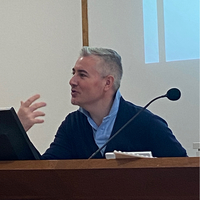






Uploads
Papers by Gunnar P H Dietz